-
AuthorSearch Results
-
March 2, 2025 at 10:29 am #7854
In reply to: Helix Mysteries – Inside the Case
Arthurian Parallels in Helix 25
This table explores an overlay of Arthurian archetypes woven into the narrative of Helix 25.
By mapping key mythological figures to characters and themes within the story, it provides archetypal templates for exploration of leadership, unity, betrayal, and redemption in a futuristic setting.Arthurian Archetype Role in Arthurian Myth Helix 25 Counterpart Narrative Integration in Helix 25 Themes & Contemporary Reflections Merlin Wise guide, prophet, keeper of lost knowledge, enigmatic mentor. Merdhyn Winstrom Hermit survivor whose beacon reawakens lost knowledge, eccentric guide bridging Earth and Helix. Echoes of lost wisdom resurfacing in times of crisis. Role of eccentric thinkers in shaping the future. King Arthur (Once and Future King) Sleeping leader destined to return, restorer of order and unity. Captain Veranassessee Cryo-sleeping leader awakened to restore stability and uncover ship’s deeper truths. Balancing destiny, responsibility, and the burden of leadership in a fractured world. Lady of the Lake Guardian of sacred wisdom, bestower of power, holds destiny in trust. Molly & Ellis Marlowe Custodians of ancestral knowledge, connecting genetic past to future, deciding who is worthy. Gatekeepers of forgotten truths. Who decides what knowledge should be passed down? Excalibur Sacred weapon representing legitimacy, strength, and destiny. Genetic/Technological Legacy (DNA or Artifact) Latent genetic or technological power that legitimizes leadership and enables restoration. What makes someone truly worthy of leadership—birthright, wisdom, or action? The Round Table Assembly of noble figures, unifying leadership for justice and stability. Crew Reunion & Unity Arc Gathering key figures and factions, resolving past divisions, solidifying leadership. How do we rebuild trust and unity in a world fractured by conflict and betrayal? The Holy Grail Ultimate quest for redemption, unity, and spiritual awakening. Rediscovered Earth or True Purpose Journey to unify factions, reconnect with Earth, and rediscover humanity’s true mission. Is humanity’s purpose merely survival, or is there something greater to strive for? The Fisher King Wounded guardian of a dying land, whose fate mirrors humanity’s wounds. Earth’s Ruined Environmental Condition Metaphor for humanity’s wounds—only healed through wisdom, unity, and ethical leadership. Environmental stewardship as moral responsibility; the impact of neglect and division. Camelot Utopian vision, fragile and prone to betrayal and internal decay. Helix 25 Community Helix 25 as a fragile utopian experiment, threatened by division and complacency. Utopian dreams versus real-world struggles; maintaining ideals without corruption. Mordred Betrayal from within, power-hungry faction that disrupts harmony. AI Manipulators / Hidden Saboteurs Internal betrayal—either AI-driven manipulation or ideological rebellion disrupting balance. How does internal dissent shape societies? When is rebellion justified? Gwenevere Queen, torn between duty, love, and political implications. Sue Forgelot or Captain Veranassessee Powerful yet conflicted female figure, mediating between different factions and destinies. The role of women in leadership, power dynamics, and the burden of political choices. Lancelot Loyal knight, unmatched warrior, torn between personal desires and duty. Orrin Holt or Kai Nova Heroic yet personally conflicted figure, struggling with duty vs. personal ties. Can one’s personal desires coexist with duty? What happens when loyalties are divided? Gawain Moral knight, flawed but honorable, faces ethical trials and tests. Riven Holt or Anuí Naskó Character undergoing trials of morality, leadership, and self-discovery. How does one navigate moral dilemmas? Growth through trials and ethical challenges. Morgana le Fay Misunderstood sorceress, keeper of hidden knowledge, power and manipulation. Zoya Kade Keeper of esoteric knowledge, influencing fate through prophecy and genetic memory. The fine line between wisdom and manipulation. Who controls the narrative of destiny? Perceval Naïve but destined knight, seeker of truth, stumbles upon great revelations. Tundra (Molly’s granddaughter) Youthful truth-seeker, symbolizing innocence and intuitive revelation. Naivety versus wisdom—can purity of heart succeed in a complex, divided world? Galahad Pure knight, achieves the Grail through unwavering virtue and clarity. Evie Investigator who uncovers truth through integrity and unwavering pursuit of justice. The pursuit of truth and justice as a path to transformation and redemption. The Green Knight/Challenge Mystical challenger, tests worthiness and integrity through ordeal. Mutiny Group / Environmental Crisis A trial or crisis forcing humanity to reckon with its moral and environmental failures. Humanity’s reckoning with its own self-destructive patterns—can we learn from the past? July 4, 2023 at 7:52 pm #7261In reply to: Family Stories From The Other Side ~ Book Two
Long Lost Enoch Edwards

My father used to mention long lost Enoch Edwards. Nobody in the family knew where he went to and it was assumed that he went to USA, perhaps to Utah to join his sister Sophie who was a Mormon handcart pioneer, but no record of him was found in USA.
Andrew Enoch Edwards (my great great grandfather) was born in 1840, but was (almost) always known as Enoch. Although civil registration of births had started from 1 July 1837, neither Enoch nor his brother Stephen were registered. Enoch was baptised (as Andrew) on the same day as his brothers Reuben and Stephen in May 1843 at St Chad’s Catholic cathedral in Birmingham. It’s a mystery why these three brothers were baptised Catholic, as there are no other Catholic records for this family before or since. One possible theory is that there was a school attached to the church on Shadwell Street, and a Catholic baptism was required for the boys to go to the school. Enoch’s father John died of TB in 1844, and perhaps in 1843 he knew he was dying and wanted to ensure an education for his sons. The building of St Chads was completed in 1841, and it was close to where they lived.
Enoch appears (as Enoch rather than Andrew) on the 1841 census, six months old. The family were living at Unett Street in Birmingham: John and Sarah and children Mariah, Sophia, Matilda, a mysterious entry transcribed as Lene, a daughter, that I have been unable to find anywhere else, and Reuben and Stephen.
Enoch was just four years old when his father John, an engineer and millwright, died of consumption in 1844.
In 1851 Enoch’s widowed mother Sarah was a mangler living on Summer Street, Birmingham, Matilda a dressmaker, Reuben and Stephen were gun percussionists, and eleven year old Enoch was an errand boy.
On the 1861 census, Sarah was a confectionrer on Canal Street in Birmingham, Stephen was a blacksmith, and Enoch a button tool maker.
On the 10th November 1867 Enoch married Emelia Parker, daughter of jeweller and rope maker Edward Parker, at St Philip in Birmingham. Both Emelia and Enoch were able to sign their own names, and Matilda and Edwin Eddington were witnesses (Enoch’s sister and her husband). Enoch’s address was Church Street, and his occupation button tool maker.

Four years later in 1871, Enoch was a publican living on Clifton Road. Son Enoch Henry was two years old, and Ralph Ernest was three months. Eliza Barton lived with them as a general servant.
By 1881 Enoch was back working as a button tool maker in Bournebrook, Birmingham. Enoch and Emilia by then had three more children, Amelia, Albert Parker (my great grandfather) and Ada.
Garnet Frederick Edwards was born in 1882. This is the first instance of the name Garnet in the family, and subsequently Garnet has been the middle name for the eldest son (my brother, father and grandfather all have Garnet as a middle name).
Enoch was the licensed victualler at the Pack Horse Hotel in 1991 at Kings Norton. By this time, only daughters Amelia and Ada and son Garnet are living at home.

Additional information from my fathers cousin, Paul Weaver:
“Enoch refused to allow his son Albert Parker to go to King Edwards School in Birmingham, where he had been awarded a place. Instead, in October 1890 he made Albert Parker Edwards take an apprenticeship with a pawnboker in Tipton.
Towards the end of the 19th century Enoch kept The Pack Horse in Alcester Road, Hollywood, where a twist was 1d an ounce, and beer was 2d a pint. The children had to get up early to get breakfast at 6 o’clock for the hay and straw men on their way to the Birmingham hay and straw market. Enoch is listed as a member of “The Kingswood & Pack Horse Association for the Prosecution of Offenders”, a kind of early Neighbourhood Watch, dated 25 October 1890.
The Edwards family later moved to Redditch where they kept The Rifleman Inn at 35 Park Road. They must have left the Pack Horse by 1895 as another publican was in place by then.”Emelia his wife died in 1895 of consumption at the Rifleman Inn in Redditch, Worcestershire, and in 1897 Enoch married Florence Ethel Hedges in Aston. Enoch was 56 and Florence was just 21 years old.

The following year in 1898 their daughter Muriel Constance Freda Edwards was born in Deritend, Warwickshire.
In 1901 Enoch, (Andrew on the census), publican, Florence and Muriel were living in Dudley. It was hard to find where he went after this.From Paul Weaver:
“Family accounts have it that Enoch EDWARDS fell out with all his family, and at about the age of 60, he left all behind and emigrated to the U.S.A. Enoch was described as being an active man, and it is believed that he had another family when he settled in the U.S.A. Esmor STOKES has it that a postcard was received by the family from Enoch at Niagara Falls.
On 11 June 1902 Harry Wright (the local postmaster responsible in those days for licensing) brought an Enoch EDWARDS to the Bedfordshire Petty Sessions in Biggleswade regarding “Hole in the Wall”, believed to refer to the now defunct “Hole in the Wall” public house at 76 Shortmead Street, Biggleswade with Enoch being granted “temporary authority”. On 9 July 1902 the transfer was granted. A year later in the 1903 edition of Kelly’s Directory of Bedfordshire, Hunts and Northamptonshire there is an Enoch EDWARDS running the Wheatsheaf Public House, Church Street, St. Neots, Huntingdonshire which is 14 miles south of Biggleswade.”
It seems that Enoch and his new family moved away from the midlands in the early 1900s, but again the trail went cold.
When I started doing the genealogy research, I joined a local facebook group for Redditch in Worcestershire. Enoch’s son Albert Parker Edwards (my great grandfather) spent most of his life there. I asked in the group about Enoch, and someone posted an illustrated advertisement for Enoch’s dog powders. Enoch was a well known breeder/keeper of St Bernards and is cited in a book naming individuals key to the recovery/establishment of ‘mastiff’ size dog breeds.
We had not known that Enoch was a breeder of champion St Bernard dogs!
Once I knew about the St Bernard dogs and the names Mount Leo and Plinlimmon via the newspaper adverts, I did an internet search on Enoch Edwards in conjunction with these dogs.
Enoch’s St Bernard dog “Mount Leo” was bred from the famous Plinlimmon, “the Emperor of Saint Bernards”. He was reported to have sent two puppies to Omaha and one of his stud dogs to America for a season, and in 1897 Enoch made the news for selling a St Bernard to someone in New York for £200. Plinlimmon, bred by Thomas Hall, was born in Liverpool, England on June 29, 1883. He won numerous dog shows throughout Europe in 1884, and in 1885, he was named Best Saint Bernard.
In the Birmingham Mail on 14th June 1890:
“Mr E Edwards, of Bournebrook, has been well to the fore with his dogs of late. He has gained nine honours during the past fortnight, including a first at the Pontypridd show with a St Bernard dog, The Speaker, a son of Plinlimmon.”
In the Alcester Chronicle on Saturday 05 June 1897:


It was discovered that Enoch, Florence and Muriel moved to Canada, not USA as the family had assumed. The 1911 census for Montreal St Jaqcues, Quebec, stated that Enoch, (Florence) Ethel, and (Muriel) Frida had emigrated in 1906. Enoch’s occupation was machinist in 1911. The census transcription is not very good. Edwards was transcribed as Edmand, but the dates of birth for all three are correct. Birthplace is correct ~ A for Anglitan (the census is in French) but race or tribe is also an A but the transcribers have put African black! Enoch by this time was 71 years old, his wife 33 and daughter 11.
Additional information from Paul Weaver:
“In 1906 he and his new family travelled to Canada with Enoch travelling first and Ethel and Frida joined him in Quebec on 25 June 1906 on board the ‘Canada’ from Liverpool.
Their immigration record suggests that they were planning to travel to Winnipeg, but five years later in 1911, Enoch, Florence Ethel and Frida were still living in St James, Montreal. Enoch was employed as a machinist by Canadian Government Railways working 50 hours. It is the 1911 census record that confirms his birth as November 1840. It also states that Enoch could neither read nor write but managed to earn $500 in 1910 for activity other than his main profession, although this may be referring to his innkeeping business interests.
By 1921 Florence and Muriel Frida are living in Langford, Neepawa, Manitoba with Peter FUCHS, an Ontarian farmer of German descent who Florence had married on 24 Jul 1913 implying that Enoch died sometime in 1911/12, although no record has been found.”The extra $500 in earnings was perhaps related to the St Bernard dogs. Enoch signed his name on the register on his marriage to Emelia, and I think it’s very unlikely that he could neither read nor write, as stated above.
However, it may not be Enoch’s wife Florence Ethel who married Peter Fuchs. A Florence Emma Edwards married Peter Fuchs, and on the 1921 census in Neepawa her daugther Muriel Elizabeth Edwards, born in 1902, lives with them. Quite a coincidence, two Florence and Muriel Edwards in Neepawa at the time. Muriel Elizabeth Edwards married and had two children but died at the age of 23 in 1925. Her mother Florence was living with the widowed husband and the two children on the 1931 census in Neepawa. As there was no other daughter on the 1911 census with Enoch, Florence and Muriel in Montreal, it must be a different Florence and daughter. We don’t know, though, why Muriel Constance Freda married in Neepawa.
Indeed, Florence was not a widow in 1913. Enoch died in 1924 in Montreal, aged 84. Neither Enoch, Florence or their daughter has been found yet on the 1921 census. The search is not easy, as Enoch sometimes used the name Andrew, Florence used her middle name Ethel, and daughter Muriel used Freda, Valerie (the name she added when she married in Neepawa), and died as Marcheta. The only name she NEVER used was Constance!
A Canadian genealogist living in Montreal phoned the cemetery where Enoch was buried. She said “Enoch Edwards who died on Feb 27 1924 is not buried in the Mount Royal cemetery, he was only cremated there on March 4, 1924. There are no burial records but he died of an abcess and his body was sent to the cemetery for cremation from the Royal Victoria Hospital.”
1924 Obituary for Enoch Edwards:
Cimetière Mont-Royal Outremont, Montreal Region, Quebec, Canada
The Montreal Star 29 Feb 1924, Fri · Page 31

Muriel Constance Freda Valerie Edwards married Arthur Frederick Morris on 24 Oct 1925 in Neepawa, Manitoba. (She appears to have added the name Valerie when she married.)
Unexpectedly a death certificate appeared for Muriel via the hints on the ancestry website. Her name was “Marcheta Morris” on this document, however it also states that she was the widow of Arthur Frederick Morris and daughter of Andrew E Edwards and Florence Ethel Hedges. She died suddenly in June 1948 in Flos, Simcoe, Ontario of a coronary thrombosis, where she was living as a housekeeper.
 June 13, 2023 at 10:31 am #7255
June 13, 2023 at 10:31 am #7255In reply to: Family Stories From The Other Side ~ Book Two
The First Wife of John Edwards
1794-1844
John was a widower when he married Sarah Reynolds from Kinlet. Both my fathers cousin and I had come to a dead end in the Edwards genealogy research as there were a number of possible births of a John Edwards in Birmingham at the time, and a number of possible first wives for a John Edwards at the time.
John Edwards was a millwright on the 1841 census, the only census he appeared on as he died in 1844, and 1841 was the first census. His birth is recorded as 1800, however on the 1841 census the ages were rounded up or down five years. He was an engineer on some of the marriage records of his children with Sarah, and on his death certificate, engineer and millwright, aged 49. The age of 49 at his death from tuberculosis in 1844 is likely to be more accurate than the census (Sarah his wife was present at his death), making a birth date of 1794 or 1795.
John married Sarah Reynolds in January 1827 in Birmingham, and I am descended from this marriage. Any children of John’s first marriage would no doubt have been living with John and Sarah, but had probably left home by the time of the 1841 census.
I found an Elizabeth Edwards, wife of John Edwards of Constitution Hill, died in August 1826 at the age of 23, as stated on the parish death register. It would be logical for a young widower with small children to marry again quickly. If this was John’s first wife, the marriage to Sarah six months later in January 1827 makes sense. Therefore, John’s first wife, I assumed, was Elizabeth, born in 1803.
Death of Elizabeth Edwards, 23 years old. St Mary, Birmingham, 15 Aug 1826:

There were two baptisms recorded for parents John and Elizabeth Edwards, Constitution Hill, and John’s occupation was an engineer on both baptisms.
They were both daughters: Sarah Ann in 1822 and Elizabeth in 1824.Sarah Ann Edwards: St Philip, Birmingham. Born 15 March 1822, baptised 7 September 1822:

Elizabeth Edwards: St Philip, Birmingham. Born 6 February 1824, baptised 25 February 1824:

With John’s occupation as engineer stated, it looked increasingly likely that I’d found John’s first wife and children of that marriage.
Then I found a marriage of Elizabeth Beach to John Edwards in 1819, and subsequently found an Elizabeth Beach baptised in 1803. This appeared to be the right first wife for John, until an Elizabeth Slater turned up, with a marriage to a John Edwards in 1820. An Elizabeth Slater was baptised in 1803. Either Elizabeth Beach or Elizabeth Slater could have been the first wife of John Edwards. As John’s first wife Elizabeth is not related to us, it’s not necessary to go further back, and in a sense, doesn’t really matter which one it was.
But the Slater name caught my eye.
But first, the name Sarah Ann.
Of the possible baptisms for John Edwards, the most likely seemed to be in 1794, parents John and Sarah. John and Sarah had two infant daughters die just prior to John’s birth. The first was Sarah, the second Sarah Ann. Perhaps this was why John named his daughter Sarah Ann? In the absence of any other significant clues, I decided to assume these were the correct parents. I found and read half a dozen wills of any John Edwards I could find within the likely time period of John’s fathers death.
One of them was dated 1803. In this will, John mentions that his children are not yet of age. (John would have been nine years old.)
He leaves his plating business and some properties to his eldest son Thomas Davis Edwards, (just shy of 21 years old at the time of his fathers death in 1803) with the business to be run jointly with his widow, Sarah. He mentions his son John, and leaves several properties to him, when he comes of age. He also leaves various properties to his daughters Elizabeth and Mary, ditto. The baptisms for all of these children, including the infant deaths of Sarah and Sarah Ann have been found. All but Mary’s were in the same parish. (I found one for Mary in Sutton Coldfield, which was apparently correct, as a later census also recorded her birth as Sutton Coldfield. She was living with family on that census, so it would appear to be correct that for whatever reason, their daughter Mary was born in Sutton Coldfield)Mary married John Slater in 1813. The witnesses were Elizabeth Whitehouse and John Edwards, her sister and brother. Elizabeth married William Nicklin Whitehouse in 1805 and one of the witnesses was Mary Edwards.
Mary’s husband John Slater died in 1821. They had no children. Mary never remarried, and lived with her bachelor brother Thomas Davis Edwards in West Bromwich. Thomas never married, and on the census he was either a proprietor of houses, or “sinecura” (earning a living without working).With Mary marrying a Slater, does this indicate that her brother John’s first wife was Elizabeth Slater rather than Elizabeth Beach? It is a compelling possibility, but does not constitute proof.
Not only that, there is no absolute proof that the John Edwards who died in 1803 was our ancestor John Edwards father.
If we can’t be sure which Elizabeth married John Edwards, we can be reasonably sure who their daughters married. On both of the marriage records the father is recorded as John Edwards, engineer.
Sarah Ann married Mark Augustin Rawlins in 1850. Mark was a sword hilt maker at the time of the marriage, his father Mark a needle manufacturer. One of the witnesses was Elizabeth Edwards, who signed with her mark. Sarah Ann and Mark however were both able to sign their own names on the register.
Sarah Ann Edwards and Mark Augustin Rawlins marriage 14 October 1850 St Peter and St Paul, Aston, Birmingham:

Elizabeth married Nathaniel Twigg in 1851. (She was living with her sister Sarah Ann and Mark Rawlins on the 1851 census, I assume the census was taken before her marriage to Nathaniel on the 27th April 1851.) Nathaniel was a stationer (later on the census a bookseller), his father Samuel a brass founder. Elizabeth signed with her mark, apparently unable to write, and a witness was Ann Edwards. Although Sarah Ann, Elizabeth’s sister, would have been Sarah Ann Rawlins at the time, having married the previous year, she was known as Ann on later censuses. The signature of Ann Edwards looks remarkably similar to Sarah Ann Edwards signature on her own wedding. Perhaps she couldn’t write but had learned how to write her signature for her wedding?
Elizabeth Edwards and Nathaniel Twigg marriage 27 April 1851, St Peter and St Paul, Aston, Birmingham:

Sarah Ann and Mark Rawlins had one daughter and four sons between 1852 and 1859. One of the sons, Edward Rawlins 1857-1931, was a school master and later master of an orphanage.
On the 1881 census Edward was a bookseller, in 1891 a stationer, 1901 schoolmaster and his wife Edith was matron, and in 1911 he and Edith were master and matron of St Philip’s Catholic Orphanage on Oliver Road in Birmingham. Edward and Edith did not have any children.
Edward Rawlins, 1911:
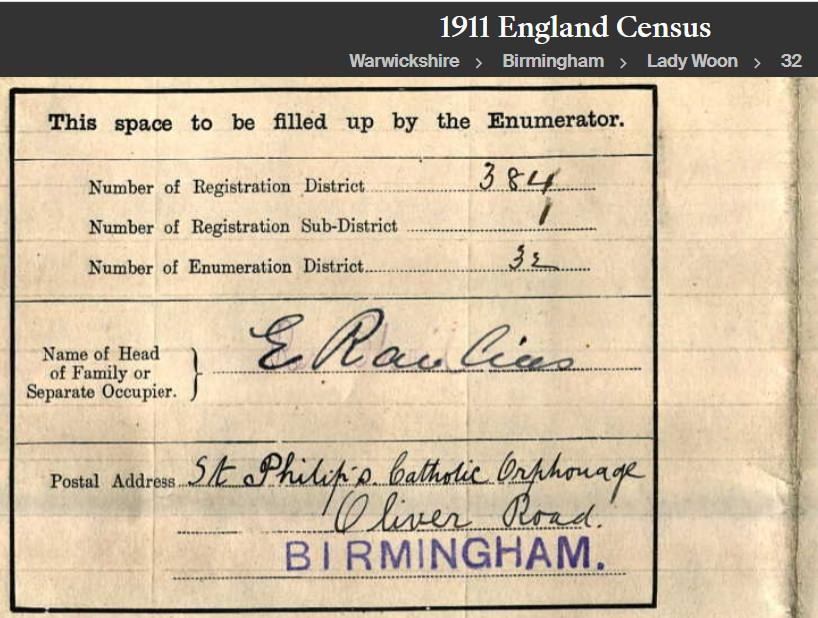
Elizabeth and Nathaniel Twigg appear to have had only one son, Arthur Twigg 1862-1943. Arthur was a photographer at 291 Bloomsbury Street, Birmingham. Arthur married Harriet Moseley from Burton on Trent, and they had two daughters, Elizabeth Ann 1897-1954, and Edith 1898-1983. I found a photograph of Edith on her wedding day, with her father Arthur in the picture. Arthur and Harriet also had a son Samuel Arthur, who lived for less than a month, born in 1904. Arthur had mistakenly put this son on the 1911 census stating “less than one month”, but the birth and death of Samuel Arthur Twigg were registered in the same quarter of 1904, and none were found registered for 1911.
Edith Twigg and Leslie A Hancock on their Wedding Day 1925. Arthur Twigg behind the bride. Maybe Elizabeth Ann Twigg seated on the right: (photo found on the ancestry website)
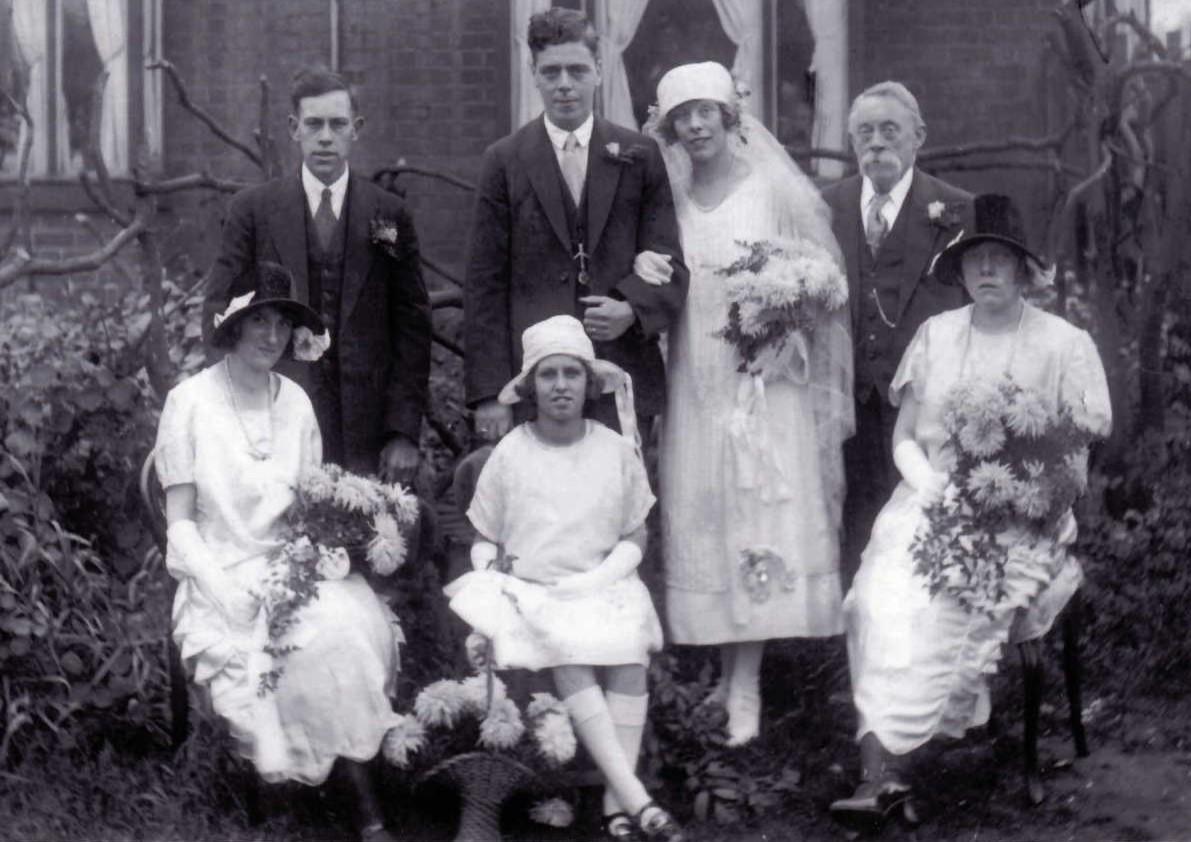
Photographs by Arthur Twigg, 291 Bloomsbury Street, Birmingham:
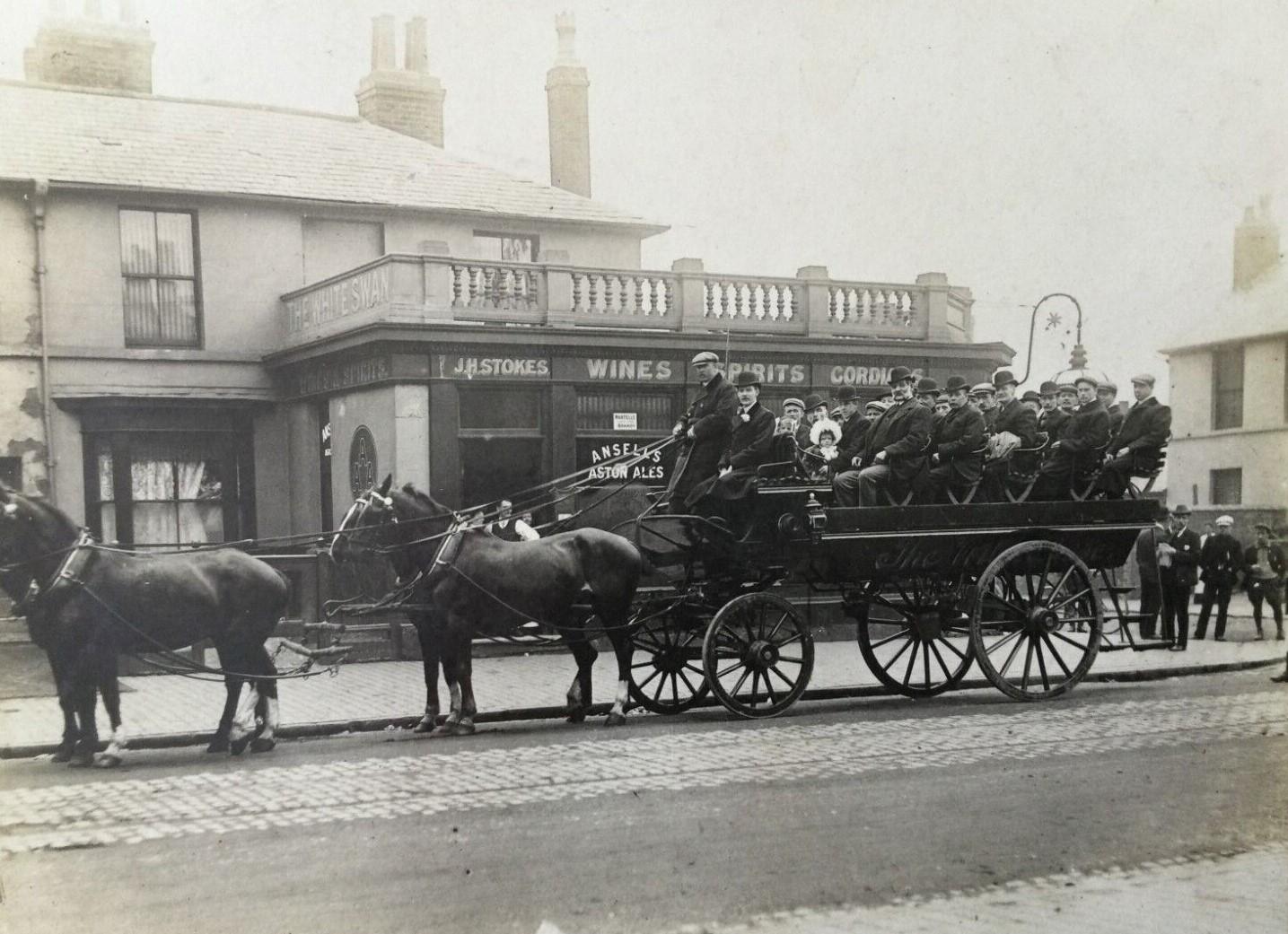
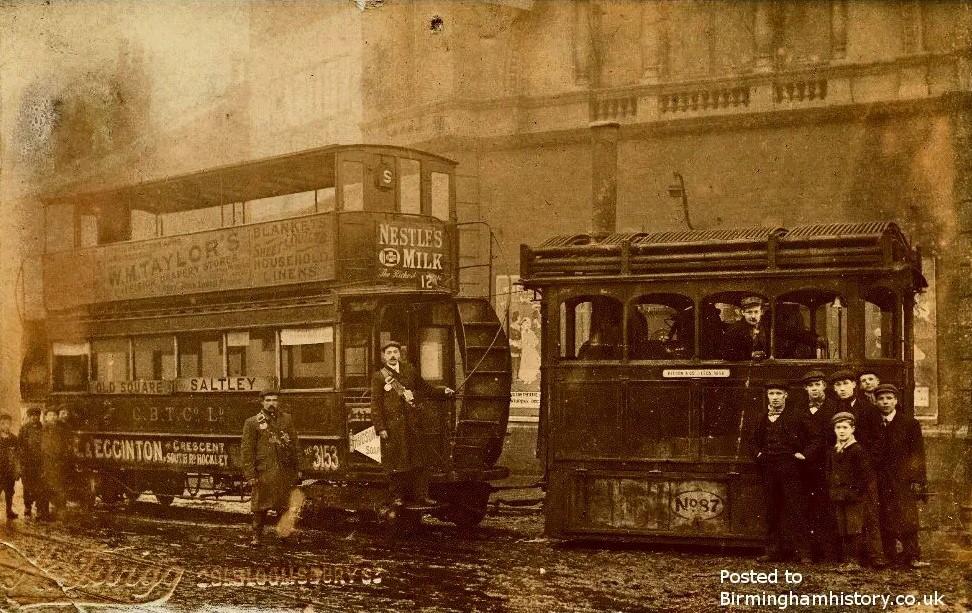 March 21, 2022 at 7:05 am #6284
March 21, 2022 at 7:05 am #6284In reply to: The Elusive Samuel Housley and Other Family Stories
To Australia
Grettons
Charles Herbert Gretton 1876-1954
Charles Gretton, my great grandmothers youngest brother, arrived in Sydney Australia on 12 February 1912, having set sail on 5 January 1912 from London. His occupation on the passenger list was stockman, and he was traveling alone. Later that year, in October, his wife and two sons sailed out to join him.
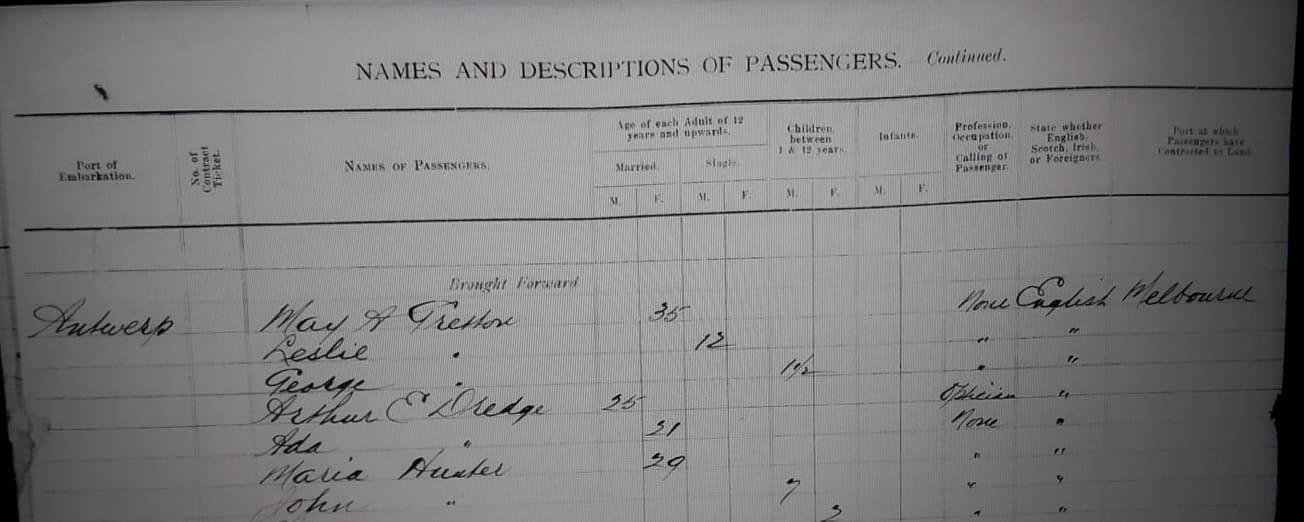
Charles was born in Swadlincote. He married Mary Anne Illsley, a local girl from nearby Church Gresley, in 1898. Their first son, Leslie Charles Bloemfontein Gretton, was born in 1900 in Church Gresley, and their second son, George Herbert Gretton, was born in 1910 in Swadlincote. In 1901 Charles was a colliery worker, and on the 1911 census, his occupation was a sanitary ware packer.
Charles and Mary Anne had two more sons, both born in Footscray: Frank Orgill Gretton in 1914, and Arthur Ernest Gretton in 1920.
On the Australian 1914 electoral rolls, Charles and Mary Ann were living at 72 Moreland Street, Footscray, and in 1919 at 134 Cowper Street, Footscray, and Charles was a labourer. In 1924, Charles was a sub foreman, living at 3, Ryan Street E, Footscray, Australia. On a later electoral register, Charles was a foreman. Footscray is a suburb of Melbourne, and developed into an industrial zone in the second half of the nineteenth century.
Charles died in Victoria in 1954 at the age of 77. His wife Mary Ann died in 1958.
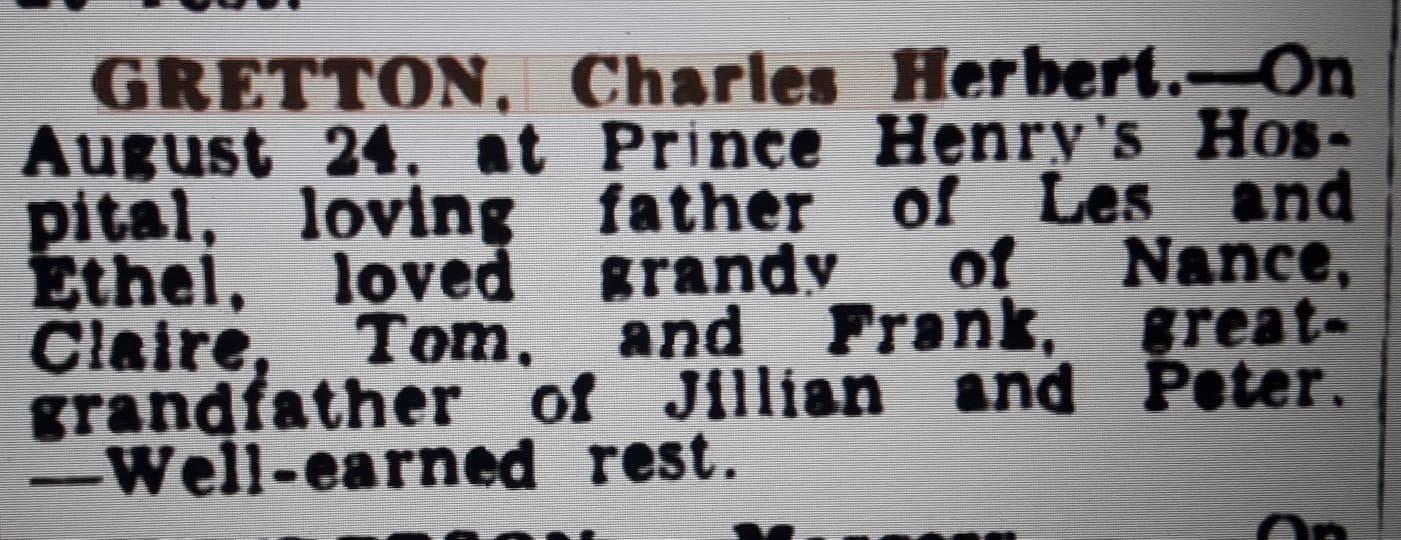
Charles and Mary Ann Gretton:
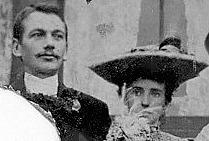
Leslie Charles Bloemfontein Gretton 1900-1955
Leslie was an electrician. He married Ethel Christine Halliday, born in 1900 in Footscray, in 1927. They had four children: Tom, Claire, Nancy and Frank. By 1943 they were living in Yallourn. Yallourn, Victoria was a company town in Victoria, Australia built between the 1920s and 1950s to house employees of the State Electricity Commission of Victoria, who operated the nearby Yallourn Power Station complex. However, expansion of the adjacent open-cut brown coal mine led to the closure and removal of the town in the 1980s.
On the 1954 electoral registers, daughter Claire Elizabeth Gretton, occupation teacher, was living at the same address as Leslie and Ethel.
Leslie died in Yallourn in 1955, and Ethel nine years later in 1964, also in Yallourn.
George Herbert Gretton 1910-1970
George married Florence May Hall in 1934 in Victoria, Australia. In 1942 George was listed on the electoral roll as a grocer, likewise in 1949. In 1963 his occupation was a process worker, and in 1968 in Flinders, a horticultural advisor.
George died in Lang Lang, not far from Melbourne, in 1970.
Frank Orgill Gretton 1914-
Arthur Ernest Gretton 1920-
Orgills
John Orgill 1835-1911
John Orgill was Charles Herbert Gretton’s uncle. He emigrated to Australia in 1865, and married Elizabeth Mary Gladstone 1845-1926 in Victoria in 1870. Their first child was born in December that year, in Dandenong. They had seven children, and their three sons all have the middle name Gladstone.
John Orgill was a councillor for the Shire of Dandenong in 1873, and between 1876 and 1879.
John Orgill:
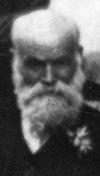
John Orgill obituary in the South Bourke and Mornington Journal, 21 December 1911:
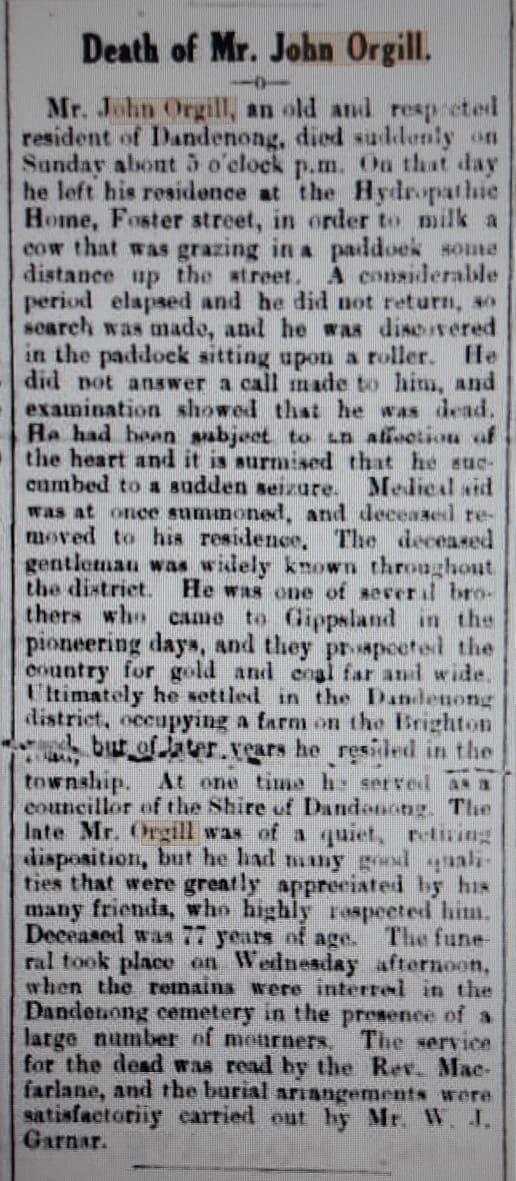
John’s wife Elizabeth Orgill, a teacher and a “a public spirited lady” according to newspaper articles, opened a hydropathic hospital in Dandenong called Gladstone House.
Elizabeth Gladstone Orgill:
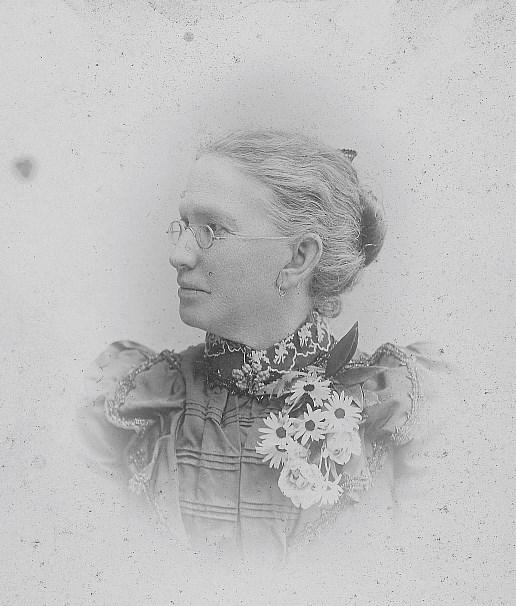
On the Old Dandenong website:
Gladstone House hydropathic hospital on the corner of Langhorne and Foster streets (153 Foster Street) Dandenong opened in 1896, working on the theory of water therapy, no medicine or operations. Her husband passed away in 1911 at 77, around similar time Dr Barclay Thompson obtained control of the practice. Mrs Orgill remaining on in some capacity.
Elizabeth Mary Orgill (nee Gladstone) operated Gladstone House until at least 1911, along with another hydropathic hospital (Birthwood) on Cheltenham road. She was the daughter of William Gladstone (Nephew of William Ewart Gladstone, UK prime minister in 1874).
Around 1912 Dr A. E. Taylor took over the location from Dr. Barclay Thompson. Mrs Orgill was still working here but no longer controlled the practice, having given it up to Barclay. Taylor served as medical officer for the Shire for before his death in 1939. After Taylor’s death Dr. T. C. Reeves bought his practice in 1939, later that year being appointed medical officer,
Gladstone Road in Dandenong is named after her family, who owned and occupied a farming paddock in the area on former Police Paddock ground, the Police reserve having earlier been reduced back to Stud Road.
Hydropathy (now known as Hydrotherapy) and also called water cure, is a part of medicine and alternative medicine, in particular of naturopathy, occupational therapy and physiotherapy, that involves the use of water for pain relief and treatment.
Gladstone House, Dandenong:
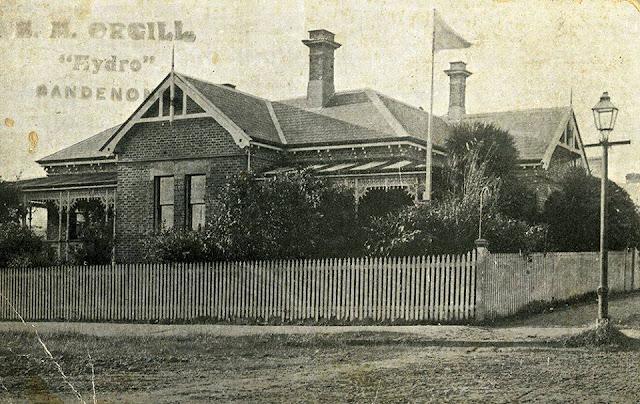
John’s brother Robert Orgill 1830-1915 also emigrated to Australia. I met (online) his great great grand daughter Lidya Orgill via the Old Dandenong facebook group.
John’s other brother Thomas Orgill 1833-1908 also emigrated to the same part of Australia.
Thomas Orgill:

One of Thomas Orgills sons was George Albert Orgill 1880-1949:
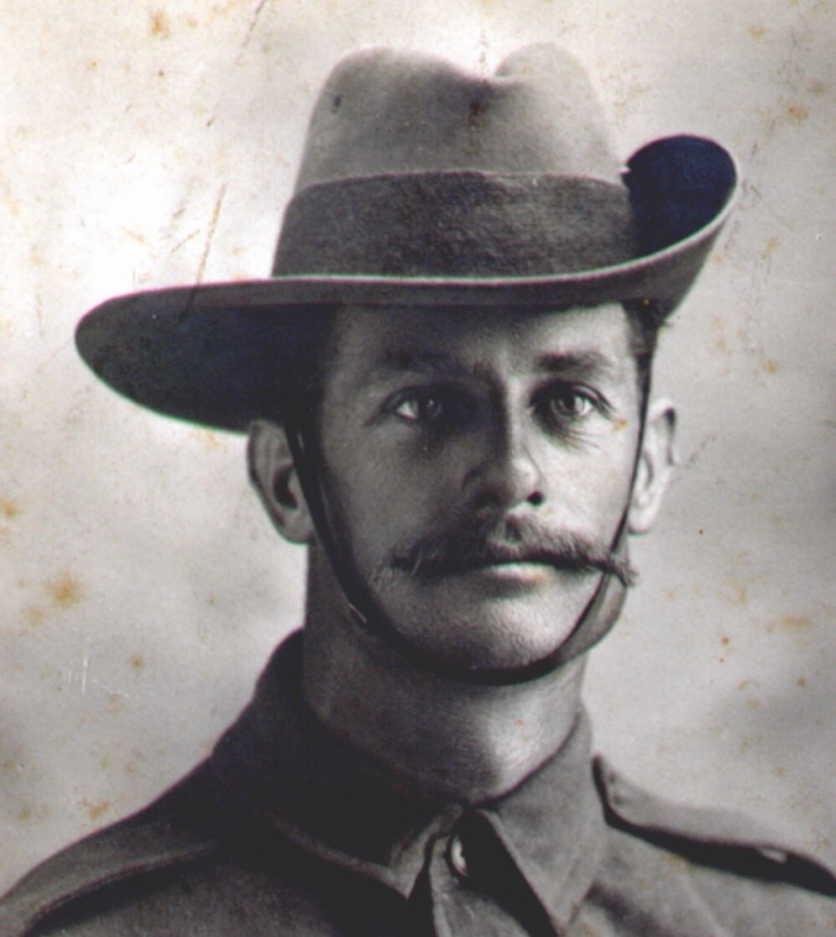
A letter was published in The South Bourke & Mornington Journal (Richmond, Victoria, Australia) on 17 Jun 1915, to Tom Orgill, Emerald Hill (South Melbourne) from hospital by his brother George Albert Orgill (4th Pioneers) describing landing of Covering Party prior to dawn invasion of Gallipoli:
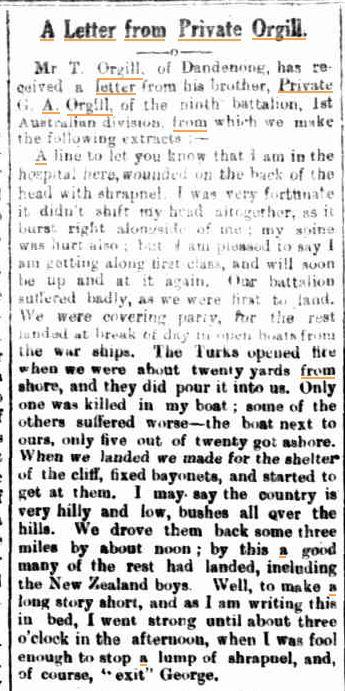
Another brother Henry Orgill 1837-1916 was born in Measham and died in Dandenong, Australia. Henry was a bricklayer living in Measham on the 1861 census. Also living with his widowed mother Elizabeth at that address was his sister Sarah and her husband Richard Gretton, the baker (my great great grandparents). In October of that year he sailed to Melbourne. His occupation was bricklayer on his death records in 1916.
Two of Henry’s sons, Arthur Garfield Orgill born 1888 and Ernest Alfred Orgill born 1880 were killed in action in 1917 and buried in Nord-Pas-de-Calais, France. Another son, Frederick Stanley Orgill, died in 1897 at the age of seven.
A fifth brother, William Orgill 1842- sailed from Liverpool to Melbourne in 1861, at 19 years of age. Four years later in 1865 he sailed from Victoria, Australia to New Zealand.
I assumed I had found all of the Orgill brothers who went to Australia, and resumed research on the Orgills in Measham, in England. A search in the British Newspaper Archives for Orgills in Measham revealed yet another Orgill brother who had gone to Australia.
Matthew Orgill 1828-1907 went to South Africa and to Australia, but returned to Measham.
The Orgill brothers had two sisters. One was my great great great grandmother Sarah, and the other was Hannah. Hannah married Francis Hart in Measham. One of her sons, John Orgill Hart 1862-1909, was born in Measham. On the 1881 census he was a 19 year old carpenters apprentice. Two years later in 1883 he was listed as a joiner on the passenger list of the ship Illawarra, bound for Australia. His occupation at the time of his death in Dandenong in 1909 was contractor.
An additional coincidental note about Dandenong: my step daughter Emily’s Australian partner is from Dandenong.
Housleys
Charles Housley 1823-1856
Charles Housley emigrated to Australia in 1851, the same year that his brother George emigrated to USA. Charles is mentioned in the Narrative on the Letters by Barbara Housley, and appears in the Housley Letters chapters.
Rushbys
George “Mike” Rushby 1933-
Mike moved to Australia from South Africa. His story is a separate chapter.
February 5, 2022 at 1:59 pm #6272In reply to: The Elusive Samuel Housley and Other Family Stories
The Housley Letters
The Carringtons
Carrington Farm, Smalley:

Ellen Carrington was born in 1795. Her father William Carrington 1755-1833 was from Smalley. Her mother Mary Malkin 1765-1838 was from Ellastone, in Staffordshire. Ellastone is on the Derbyshire border and very close to Ashboure, where Ellen married William Housley.
From Barbara Housley’s Narrative on the Letters:
Ellen’s family was evidently rather prominant in Smalley. Two Carringtons (John and William) served on the Parish Council in 1794. Parish records are full of Carrington marriages and christenings.
The letters refer to a variety of “uncles” who were probably Ellen’s brothers, but could be her uncles. These include:
RICHARD
Probably the youngest Uncle, and certainly the most significant, is Richard. He was a trustee for some of the property which needed to be settled following Ellen’s death. Anne wrote in 1854 that Uncle Richard “has got a new house built” and his daughters are “fine dashing young ladies–the belles of Smalley.” Then she added, “Aunt looks as old as my mother.”
Richard was born somewhere between 1808 and 1812. Since Richard was a contemporary of the older Housley children, “Aunt,” who was three years younger, should not look so old!
Richard Carrington and Harriet Faulkner were married in Repton in 1833. A daughter Elizabeth was baptised March 24, 1834. In July 1872, Joseph wrote: “Elizabeth is married too and a large family and is living in Uncle Thomas’s house for he is dead.” Elizabeth married Ayres (Eyres) Clayton of Lascoe. His occupation was listed as joiner and shopkeeper. They were married before 1864 since Elizabeth Clayton witnessed her sister’s marriage. Their children in April 1871 were Selina (1863), Agnes Maria (1866) and Elizabeth Ann (1868). A fourth daughter, Alice Augusta, was born in 1872 or 1873, probably by July 1872 to fit Joseph’s description “large family”! A son Charles Richard was born in 1880.
An Elizabeth Ann Clayton married John Arthur Woodhouse on May 12, 1913. He was a carpenter. His father was a miner. Elizabeth Ann’s father, Ayres, was also a carpenter. John Arthur’s age was given as 25. Elizabeth Ann’s age was given as 33 or 38. However, if she was born in 1868, her age would be 45. Possibly this is another case of a child being named for a deceased sibling. If she were 38 and born in 1875, she would fill the gap between Alice Augusta and Charles Richard.
Selina Clayton, who would have been 18, is not listed in the household in 1881. She died on June 11, 1914 at age 51. Agnes Maria Clayton died at the age of 25 and was buried March 31, 1891. Charles Richard died at the age of 5 and was buried on February 4, 1886. A Charles James Clayton, 18 months, was buried June 8, 1889 in Heanor.
Richard Carrington’s second daughter, Selina, born in 1837, married Walker Martin (b.1835) on February 11, 1864 and they were living at Kidsley Park Farm in 1872, according to a letter from Joseph, and, according to the census, were still there in 1881. This 100 acre farm was formerly the home of Daniel Smith and his daughter Elizabeth Davy Barber. Selina and Walker had at least five children: Elizabeth Ann (1865), Harriet Georgianna (1866/7), Alice Marian (September 6, 1868), Philip Richard (1870), and Walker (1873). In December 1972, Joseph mentioned the death of Philip Walker, a farmer of Prospect Farm, Shipley. This was probably Walker Martin’s grandfather, since Walker was born in Shipley. The stock was to be sold the following Monday, but his daughter (Walker’s mother?) died the next day. Walker’s father was named Thomas. An Annie Georgianna Martin age 13 of Shipley died in April of 1859.
Selina Martin died on October 29, 1906 but her estate was not settled until November 14, 1910. Her gross estate was worth L223.56. Her son Walker and her daughter Harriet Georgiana were her trustees and executers. Walker was to get Selina’s half of Richard’s farm. Harriet Georgiana and Alice Marian were to be allowed to live with him. Philip Richard received L25. Elizabeth Ann was already married to someone named Smith.
Richard and Harriet may also have had a son George. In 1851 a Harriet Carrington and her three year old son George were living with her step-father John Benniston in Heanor. John may have been recently widowed and needed her help. Or, the Carrington home may have been inadequate since Anne reported a new one was built by 1854. Selina’s second daughter’s name testifies to the presence of a “George” in the family! Could the death of this son account for the haggard appearance Anne described when she wrote: “Aunt looks as old as my mother?”
Harriet was buried May 19, 1866. She was 55 when she died.In 1881, Georgianna then 14, was living with her grandfather and his niece, Zilpah Cooper, age 38–who lived with Richard on his 63 acre farm as early as 1871. A Zilpah, daughter of William and Elizabeth, was christened October 1843. Her brother, William Walter, was christened in 1846 and married Anna Maria Saint in 1873. There are four Selina Coopers–one had a son William Thomas Bartrun Cooper christened in 1864; another had a son William Cooper christened in 1873.
Our Zilpah was born in Bretley 1843. She died at age 49 and was buried on September 24, 1892. In her will, which was witnessed by Selina Martin, Zilpah’s sister, Frances Elizabeth Cleave, wife of Horatio Cleave of Leicester is mentioned. James Eley and Francis Darwin Huish (Richard’s soliciter) were executers.
Richard died June 10, 1892, and was buried on June 13. He was 85. As might be expected, Richard’s will was complicated. Harriet Georgiana Martin and Zilpah Cooper were to share his farm. If neither wanted to live there it was to go to Georgiana’s cousin Selina Clayton. However, Zilpah died soon after Richard. Originally, he left his piano, parlor and best bedroom furniture to his daughter Elizabeth Clayton. Then he revoked everything but the piano. He arranged for the payment of £150 which he owed. Later he added a codicil explaining that the debt was paid but he had borrowed £200 from someone else to do it!
Richard left a good deal of property including: The house and garden in Smalley occupied by Eyres Clayton with four messuages and gardens adjoining and large garden below and three messuages at the south end of the row with the frame work knitters shop and garden adjoining; a dwelling house used as a public house with a close of land; a small cottage and garden and four cottages and shop and gardens.
THOMAS
In August 1854, Anne wrote “Uncle Thomas is about as usual.” A Thomas Carrington married a Priscilla Walker in 1810.
Their children were baptised in August 1830 at the same time as the Housley children who at that time ranged in age from 3 to 17. The oldest of Thomas and Priscilla’s children, Henry, was probably at least 17 as he was married by 1836. Their youngest son, William Thomas, born 1830, may have been Mary Ellen Weston’s beau. However, the only Richard whose christening is recorded (1820), was the son of Thomas and Lucy. In 1872 Joseph reported that Richard’s daughter Elizabeth was married and living in Uncle Thomas’s house. In 1851, Alfred Smith lived in house 25, Foulks lived in 26, Thomas and Priscilla lived in 27, Bennetts lived in 28, Allard lived in 29 and Day lived in 30. Thomas and Priscilla do not appear in 1861. In 1871 Elizabeth Ann and Ayres Clayton lived in House 54. None of the families listed as neighbors in 1851 remained. However, Joseph Carrington, who lived in house 19 in 1851, lived in house 51 in 1871.
JOHN
In August 1854, Anne wrote: “Uncle John is with Will and Frank has been home in a comfortable place in Cotmanhay.” Although John and William are two of the most popular Carrington names, only two John’s have sons named William. John and Rachel Buxton Carrington had a son William christened in 1788. At the time of the letters this John would have been over 100 years old. Their son John and his wife Ann had a son William who was born in 1805. However, this William age 46 was living with his widowed mother in 1851. A Robert Carrington and his wife Ann had a son John born 1n 1805. He would be the right age to be a brother to Francis Carrington discussed below. This John was living with his widowed mother in 1851 and was unmarried. There are no known Williams in this family grouping. A William Carrington of undiscovered parentage was born in 1821. It is also possible that the Will in question was Anne’s brother Will Housley.
–Two Francis Carringtons appear in the 1841 census both of them aged 35. One is living with Richard and Harriet Carrington. The other is living next door to Samuel and Ellen Carrington Kerry (the trustee for “father’s will”!). The next name in this sequence is John Carrington age 15 who does not seem to live with anyone! but may be part of the Kerry household.
FRANK (see above)
While Anne did not preface her mention of the name Frank with an “Uncle,” Joseph referred to Uncle Frank and James Carrington in the same sentence. A James Carrington was born in 1814 and had a wife Sarah. He worked as a framework knitter. James may have been a son of William and Anne Carrington. He lived near Richard according to the 1861 census. Other children of William and Anne are Hannah (1811), William (1815), John (1816), and Ann (1818). An Ann Carrington married a Frank Buxton in 1819. This might be “Uncle Frank.”
An Ellen Carrington was born to John and Rachel Carrington in 1785. On October 25, 1809, a Samuel Kerry married an Ellen Carrington. However this Samuel Kerry is not the trustee involved in settling Ellen’s estate. John Carrington died July 1815.
William and Mary Carrington:
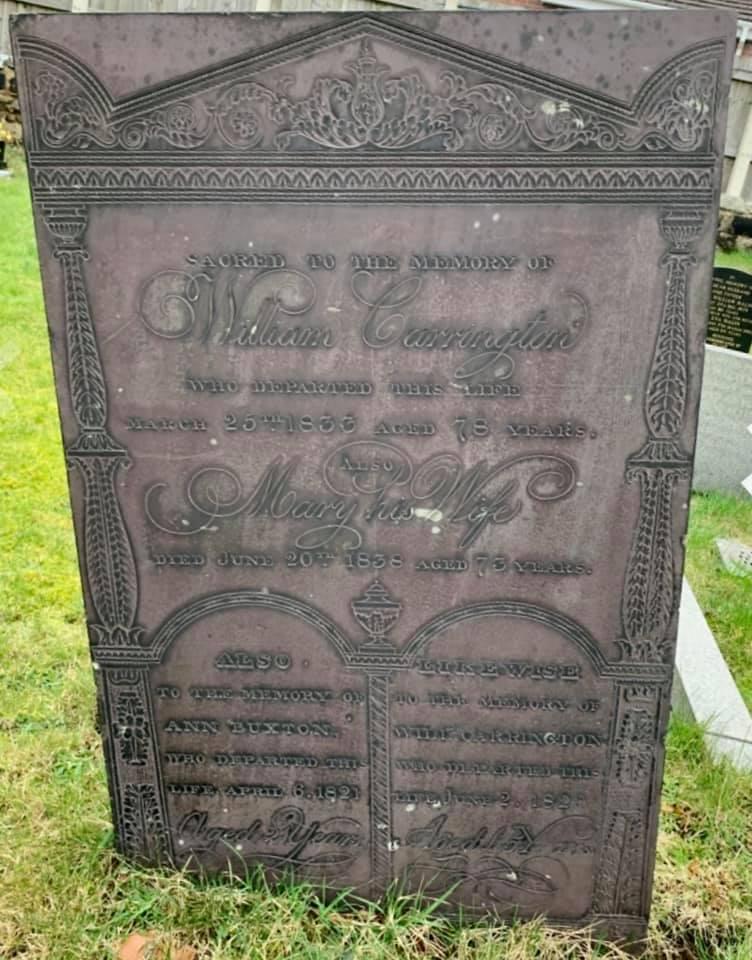 March 31, 2020 at 10:46 am #5948
March 31, 2020 at 10:46 am #5948In reply to: Scrying the Word Cloud
Voice town welcome virus suddenly
Dusty complete plague flew trail
Fell party change attention crying
Walk move drama married experiment
Arthur baby showed deal stress
Rose legs aren luckily doctor
Resumed worn shaman spotted focused
Throwing cool arona giant secretive
Considering cave mangled pearl offer
Mystery powderFebruary 19, 2020 at 12:35 pm #5797In reply to: Two Aunties au Pair and Their Pert Carouses
“This is the life, eh!” June said, stretching out on the sun lounger sipping a fruity cocktail. “Turquoise sea and a salty breeze, this is the life for me!” she said, kicking off her new deck shoes in nautical blue and white, and hitching her dress hem up to expose her thighs to the sun.
The skipper raised an eyebrow and smiled sardonically, while simultaneously averting his eyes from the unappetizing sight of the doughy flesh. He could imagine this one rolling around below decks looking green as soon as the weather changed.
“Sure beats that jail. That had me worried, I’ll admit it. I wasn’t sure we were ever gonna make it outta there,” replied April, smiling fondly at Ella Marie and giving her hand an affectionate squeeze. “You saved our bacon, honey.”
“If it weren’t for that there Lord Wrick turning up, even the money might not have got you out.” Arthur chimed in. “Promising ole president Lump that land for the golf course if’n he pardoned you. Jacqui, you done wonders there.”
“Ah well, the young Lord Wrick owed me a favour, you might say. But that’s another story,” Jacqui replied. “The main thing was we had to get out of the country fast before Lump finds out about that land in Scotland.”
June sniggered. “Can’t imagine him in a kilt, can you? I wonder if he’s orange down there as well.”
“Oh, please! You really know how to lower the tone, dontcha? Gawd, what a thought!” April started to feel queasy. Changing the subject, she said, “Hey, did I tell you our Joanie’s going to meet us in Australia too?”
February 11, 2020 at 9:19 am #5783In reply to: Two Aunties au Pair and Their Pert Carouses
“How in tarnation did ya do that?” Arthur looked at his wife suspiciously.
“Do what, honey?” Ella Marie replied, feigning innocence.
“This here lottery win! How did you do that? You aint been doing them there voodoo tricks again, have you? You promised…”
“Oh heck Art, it’s pure chance, a million to one, you know that! We just got lucky, is all.” But she couldn’t meet his eye. “Well I had to do somethin’! It aint for us, it’s for those friends of Jacqui’s. When I heard they’d been locked up in jail on cooked up charges, after being so excited about visiting the family, well I couldn’t bear it.”
“You promised you wasn’t gonna do that hokey pokey stuff no more,” Arthur said.
“Yes but it aint for us. This is different, just a one time thing, helping out friends. We can pay the bail money for ’em now and get ’em outta that stinking hellpit. Aint no place for decent ladies, Art.”
“They’ll need some darned expensive lawyers to fight the Beige House, and fat chance of winning.” Art looked doubtful.
“Oh they won’t stick around to fight the case. I had this idea,” Ella Marie had that old twinkle in her eye that used to get Art all fired up, back in the day. “We’re gonna buy them a boat. I been talking to Jacqui ’bout it. An old flame of hers turned up who can sail the boat for them.”
“How big’s the boat?” asked Art, an idea brewing in his head. He’d always wanted to sail around the world.
“Well we aint bought the boat yet, Art, the lottery check only just arrived. How ’bout we go down to Orange Beach Marina and see what’s for sale? We could have a seafood lunch, make a day of it.”
A big smile spread across the old mans face. ” Well, hell, Ella Marie, I guess we can do whatever we darn well please now! Let’s do it! And,” he added, planting a loud smackeroo of a kiss on her forehead, “Let’s get a boat big enough for all of us. I’ve got an adventure in me, afore I pop my clogs, I sure do.”
January 31, 2020 at 3:35 pm #5673In reply to: Two Aunties au Pair and Their Pert Carouses
The few cars on the dark road were flying past him at speed, sometimes honking in alarm when abruptly realizing he was there at an inch of being run over. But none had stopped so far. Might have been they couldn’t see his little thumb up.
“Hitch-hiking my way back isn’t doing so well for me.” reflected Barron after a while. Oh, you may wonder how he escaped from his captors. Simple answer was he got bored waiting and he saw an opportunity.
In reality, it was an elaborate plan, and the screeching sound of a nearby car had provided the right amount of distraction for him to make a run for it. Well, not run really, more like a patient and careful tumbling around. The sound had been alarming enough for most of the forces present to run for the potential intruders without caring to leave someone to watch over the innocent sleeping baby (that was him, but he wasn’t really sleeping).
Anyway, he hadn’t made it very far outside the clandestine distillery at the back of the Motel, and was about to abandon all hope and phone his half-sister Yvanevskaia for help, when an old DRAPES CLEANING van suddenly braked to a screeching halt just in front of him.
“Why d’ya stop Art’! They’re still after us, those maniacs!”
“A baby honey! I almost ran over the baby!”
“That’s a big ass baby, it’s almost a kid, and what is it doin’ hitch-hickin’ in the dead of night?”
“I dunno my sweet cotton-candy luv,… maybe he got bored or sumthin’…”
“So what are you waiting for? Just damn’ take it, and let’s pump gas and put some distance between us and these gangsters!”
Barron was all too pleased to oblige, and as a matter of fact, had already managed to sit in the back with the funny looking lady with the long face.
“Go!” he cooed at Arthur, who pushed the engine back into a roar.
January 29, 2020 at 8:55 pm #5668In reply to: Two Aunties au Pair and Their Pert Carouses
“The Spanish Moss Motel? Well, I’ll be darned, so this it where it is,” said Arthur, “But hell, it’s no place for a baby!”
“What do you mean, Art?” asked his wife. “Is it one of them there broth kitchens full of painted tarts?”
Art shook his head. “Not exactly. Nobody really knows, ‘cept everybody knows that things go on here.” Art shook his head again. “Aint no place for a baby.”
January 29, 2020 at 4:21 am #5660In reply to: Two Aunties au Pair and Their Pert Carouses
Arthur was driving the minivan. It was an old Chewy Express van with the big bold “DRAPES CLEANING” sign on it that he’d repainted by himself over the years. The business wasn’t doing great, truth be told, so he’d cut down the marketing costs, which according to Ella Marie wasn’t a bright idea. “You never know where you next patrons could hide.” She’d said, and then had him hooked up on some social website to post random things and get some likes and thumbs up. He’d come a little late for the new century’s game and couldn’t see any of the appeal, but he’d learned over the years never to make the missus irate.
He’d been so glad when she’d come back from the floods, unscathed and full of completely batshit crazy stories. Mummies and stuff. Sounded like being rolled in shredded drapes fanfiction to him. Complete garbage, but you can’t tell people they’re crazy, they’d hate you for it, and in truth you may be wrong. You might be the one crazy and all the others the sane ones. How’s that for a thought.
Anyway, he loved his Ella Marie dearly, and had learned not to sweat the small stuff. Like this night drive to a funny place she’d just received coordinates from an acquaintance on the Net. Those were mad times, mad times indeed. At least, she could have told him she wanted to catch a new rare pokemeon go! in the dead of night, and it might have sounded… well, just as mad probably.
They were driving steadily, being careful about the road signs; the van wasn’t much for crazy stunts anyway.
“How far is that?” he asked the wife, who was busy on her phone tracking the route and chatting on the thing with her friends imaginary or else.
“Not far, luv’. Next turn right, then left, then right and we should be there.”
The last turn took them off the road, and Arthur started to wonder if that wasn’t another “turn left at your peril” GPS experiment, where they’d have to haul the van out of a tar pit, but it seemed fine so far. The place looked ominous, and full of croaking noises 🐸🐸🐸🐸.
He killed the headlights, and moved in the parking lot at a crawl. There was no point in alerting whoever was there of their nocturnal visit. A barn owl flew straight in front of the van, scaring them.
“STOP!” jumped Jacqui, who’d been sleeping the whole time, and woke up to a frightful sight.
Arthur pushed on the brakes that gave off a screeching sound that would wake up a mummy.
“Ooh, I’ve got a bad feeling about this” Ella Marie said. “Something evil is afoot, that owl was bad omen.”
January 25, 2020 at 6:40 pm #5637In reply to: Two Aunties au Pair and Their Pert Carouses
“Och aye, now that’s intriguing,” remarked Jacqui, looking up from her phone. “Well I’ll be darned.”
“What’s that, honey?” asked her friend Ella Marie, looking up from her needlepoint. She was working on a cushion cover with an Egyptian theme.
“How far away is Chickasaw?”
“Why, that’s not far away at all,” Arthur said, and then went into some detail involving road numbers that neither of the ladies paid attention to.
“What all is a happening over there in Chickasaw anyway?” asked Ella Marie.
“Can you drive me over there? I have to kidnap a baby,” said Jacqui.
Noticing the astonished looks on her friends faces she hastened to add, “Oh it had already been kidnapped. I just have to kidnap it back, the mother misses it.”
Arthur and his wife said “Ah” in unison, recalling the time when the divorced father had snatched the neighbours children, causing poor Mary Lou no end of grief.
“Of course we’ll help you, that child needs his mother,” Arthur said. “Where in Chickasaw are they holding him?”
“That’s the tricky part, Art. The exact location isn’t known. In fact, ” Jacqui said, “In all honestly I don’t quite know where to go from here.”
May 3, 2009 at 3:26 pm #2577In reply to: Strings of Nines
It had been rather a bold move on Tajine’s part, especially as she was a new member of the staff at Little Big Hopeswell, but an ingenious one, or so she thought. Tajine always aimed to please; nothing gave her more pleasure than to arrange wonderful little surprises for people based on her assumptions of what would please them. In her few short weeks with Ann, she couldn’t help but notice the disparaging remarks her publisher, Pig Littleon, habitually made about Ann’s work. The last straw for Tajine had been when Godfrey referrred to Ann’s streams of thought as ‘incoherent’, and it was at that point that the plan began to form in her mind.
“Compliments to the new cook! I must say, that was the most delicious bacon sandwich I have ever tasted,” remarked Arthur, wiping his lips with a napkin. “You must ask Tajine where she buys her bacon, it has an enticingly subtle hint of peanut, quite delicious!”
 May 3, 2009 at 3:12 pm #2576
May 3, 2009 at 3:12 pm #2576In reply to: Strings of Nines
“Arthur, DAHling, how good of you to come!” Ann hugged her old freind.
“Ann!” Arthur smiled broadly, his grey eyes twinkling merrily. “You don’t look a day over 3757 years old, how do you do it!”
“Oh, Arthur” Ann blushed “Go on with you! You’re looking rather sprightly yourself, for an old coot. Come on inside, the new cook’s preparing a snack lunch, you must be hungry after your trip. Tajine von Snork’s her name, and she makes a mean bacon buttie. Jibblington will see to your luggage.”
 May 3, 2009 at 2:26 pm #2573
May 3, 2009 at 2:26 pm #2573In reply to: Strings of Nines
Arthur Bickerswell-Snodley had been delighted to receive Ann’s invitation to stay with her at Little Big Hopeswell for the May Day weekend. He hadn’t seen Ann for 570 years, although they had remained in contact through the years, at first by old fashioned handwritten letters, and later by email —as well, of course, by telepathic means and out of body rendezvous— but this was to be an actual physical visit.
Arthur travelled by train to Chipping Else Hampton, where Jibblington, Ann’s chauffeur and general dogsbody, met him in the old jalopy, a rather grand old Silver Ghost Rolls.
Jibblington, it must be stated, worked part time for Ann, as did the enigmatic cleaning lady, Franlise — both were merely aspects of much larger personalities elsewhere engaged in myriad pursuits. Jibblington was a much of a mystery to Ann as dear Franlise was, not to mention old Godfrey Pig Littleton. Godrey’s flooh, in point of fact, had been the catalyst behind Ann’s invitation to Arthur.While Jibblington and Bickerswell-Snodley glided along the country lanes, cushioned and buoyant in the silver car’s plush, if a trifle vulgar, crimson upholstery, Ann tutted in exasperation as Godfrey pestered her to finish her latest entry to the Play.
“I haven’t finished it yet, Godfrey, sheesh!” she exclaimed. “OK, OK!” Godfrey was rather rudely drumming his fingers on her desk. “Here, you can read what I’ve written so far.”
 April 27, 2008 at 12:37 am #829
April 27, 2008 at 12:37 am #829In reply to: Circle of Eights, Stories
Ella Marie Tindale was one of the many people reported missing after the floods. Her body was never found and her husband Arthur intuitively felt that she was still alive, although he had said little to the police. They hadn’t connected the mummy’s disappearance to his wifes disappearance, but Arthur had his suspicions.
One night a few weeks previously, Arthur heard Ella Marie talking in her sleep. She often mumbled aloud, that was nothing out of the ordinary, but Arthur had had a nasty jolt when he read about the theft of the mummy, and recalled that Ella had been talking to a mummy in her sleep. He couldn’t imagine why Ella would steal a mummy, let alone walk out on their marriage in the middle of a flood, of all things, but then, Ella had always been strange.
Arthur Tindale sighed. He missed his wife.
March 24, 2008 at 4:41 pm #812In reply to: Circle of Eights, Stories
Ella Marie put the encounter to the back of her mind, and whistled loudy and kept her eyes averted when dusting the mummy case during the following months. It wasn’t until the floods of the following spring that she heard Elioctyl’s voice again, urging her to take action, that now was the perfect opportunity.
Pssst! Ella! Do it now, NOW!
NO! shouted Ella Marie.
Suit yourself, Honey, replied her husband Arthur, pouring himself a cup of coffee from a thermos and screwing the lid back on.
Ella Marie spun round, saying HUH? Yes, I mean yes, please.
Arthur raised an eyebrow and tutted. You said No, Ella, who was you talking to anyway?
Oh Lordy, Art, I was just saying NO to all the flooding, NO more rain, and all….Ella Marie replied, but her mind was racing.
Art Honey, why don’t you wade round to your mothers and see if she’s ok, why dontcha, and I’ll start moving stuff up into the attic. River’s gonna burst its banks tonight, I reckon, we oughta do what we can now.
Don’t get lifting nothing too heavy, ya hear? Leave anything you can’t manage for me, I’ll do it when I get back, Arthur replied.
As soon as Art was out of the door and down the porch steps, Ella Marie raced out the back door and into the garage. The adrenaline was pumping through her veins, and she felt light as air, and fit as a twenty year old. Her flashlight beam swept the garage…she didn’t know what, precisely, she was looking for, but she knew she’d find it.
Aha! Ella Marie spotted a coil of washing line rope, and a tarpaulin. Stuffing the flashlight into her pocket, she grabbed the surfboard off the hooks on the wall and dragged it outside, the rope and tarpaulin under her arm. Quickly she tied the tarpaulin to the surfboard, tethering it to the garage door handle while she went back inside for the oars out of the uninflated dinghy. The flood water was past her ankles now, inching towards her knees, as she set off for the museum, pulling the surfboard behind her, thankful for the power blackout and the dark streets.
November 1, 2007 at 12:09 pm #419In reply to: Circle of Eights, Stories
Arthur, the bald eagle was flying quite high above the land… he was unnoticed but was here.
He was following a raft drifting along with the current of Self River… He could see far in the distance… and could hear a tiny goaty voice
— What no bald eagle icon!?
-
AuthorSearch Results
Search Results for 'arthur'
Viewing 18 results - 1 through 18 (of 18 total)
-
Search Results
Viewing 18 results - 1 through 18 (of 18 total)